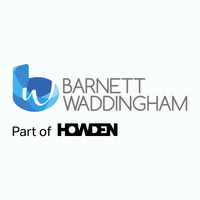Ways to make your benefit communication design accessible and inclusive
The design elements of any communication - from the imagery, branding and formatting to the way information is presented - all have a part to play in engaging people with key messages.
You should pay close attention to every design aspect to ensure your benefit communications are inclusive and accessible to everyone - it’ll demonstrate to your employees, current and future, you take their needs seriously and care about their wellbeing.
We also shouldn’t forget the importance of relevant, easy to understand copy and how it should work hand-in-hand with the design elements.
Representation matters
Make sure any imagery you use reflects your entire workforce.
Whether you’re using stock images or animations on a total reward statement, a series of emails or a mini campaign, include a diverse range of images so people from different ethnic groups, age ranges, abilities, gender expressions and sexuality are all represented. That way you’ll avoid marginalising anyone.
Prime position for numbers
Carefully consider how that all-important information is presented on the page or across your design.
Avoid burying key messages and figures deep within paragraphs or a long way down the document. People will need to work harder to find it and might give up before finding what they need.
For example, group financial information in a total rewards statement at the beginning and supplement this with infographics. And express figures as whole numbers rather than decimals, which can be more difficult for people to understand. If you need to use a percentage, it’s also useful to show it in a monetary amount too.
A list of bullet points can be turned into a flowchart or better represented through icons, for example. All this feeds into the planning stage of any memorable benefit communication design.
A visual assortment
The addition of icons and infographics provides variety, useful navigation elements and aids understanding.
Choosing to present information in a more visually appealing way such as in a pie chart, table or timeline can help those with poor financial or literacy skills as well as those with low confidence in managing their finances. Introducing design elements that work together cohesively can encourage greater levels of engagement – after all, a communication that’s eye-catching is more likely to be read.
Key information front and centre
Your communication will have key information you want to highlight – a call to action, where to find support and guidance for example - as well as the main message. You won’t want people to miss crucial details, so introduce simple design devices to help those key points pop out.
Increase the font size, make select content bold or a different colour, or box out key words and phrases to give them greater importance – but don’t overdo it. Depending on your budget, you might want to spread information across two pages instead of one, although bear in mind any printing costs.
Solid structure
A short, snappy contents list provides an overview of what’s coming and adds structure to any benefit communication. It also helps those people using a screen reader to navigate between sections.
Including a hierarchy of headings and subheadings will help with the overall narrative flow and group information together nicely. They can act as signposts for sections and break up large chunks of text into more manageable pieces.
Page numbers will give order to your documents and colours can be used to distinguish between sections. Make sure colours used meet the Government’s accessibility standards and aim for an ‘AA’ colour contrast rating in your colour palette.
Don’t forget the purpose
This all helps your reader easily identify the purpose of your communication and demonstrates you’re tailoring it specifically to them.
You want to empower people to confidently take action following the information you’ve communicated. And with thought-provoking copy and design combined with a solid structure, a variety of intelligently presented content and diverse imagery, you’ll be well on track.
Supplied by REBA Associate Member, Barnett Waddingham
Barnett Waddingham is proud to be a leading independent UK professional services consultancy at the forefront of risk, pensions, investment, and insurance. We work to deliver on our promise to ensure the highest levels of trust, integrity and quality through our purpose and behaviours.








